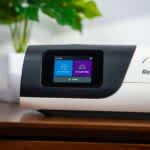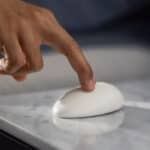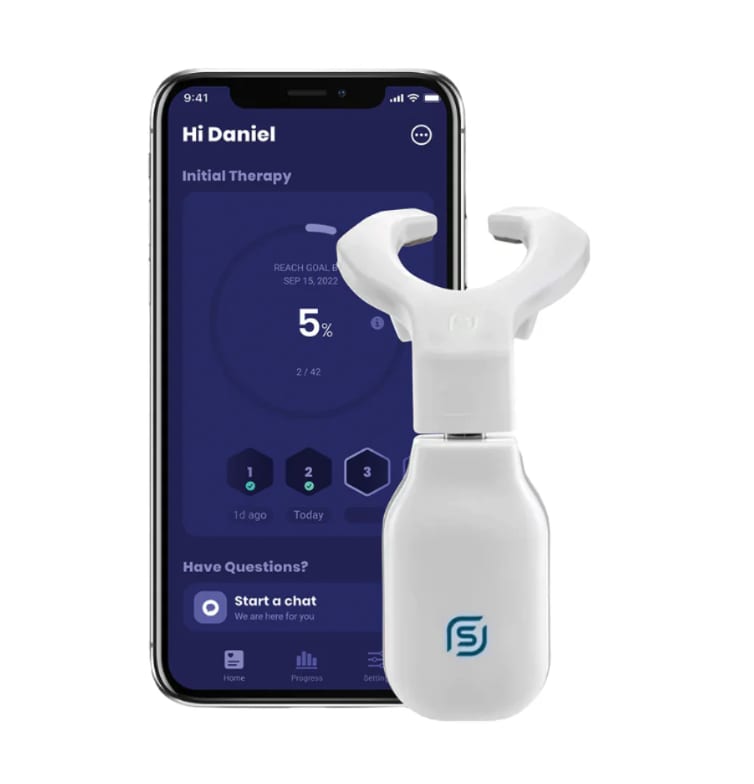Sleep Apnea is Increasingly Common – and Very Treatable.
Six million Americans live with mild to severe sleep apnea, but the American Academy of Sleep Medicine estimates the true number to be closer to 30 million, reporting that 80% of all cases go undiagnosed.
If you think (or know) that you or your partner has sleep apnea, know that you’re not alone. There is a path to better sleep and brighter days, and there’s a community of peers and experts here to support you on your journey.
Not all sleep apneas are the same, however. The three types — obstructive sleep apnea (OSA), central sleep apnea, and mixed sleep apnea — are characterized by repeated episodes of disrupted breathing while you sleep. Whether you notice frequent wakings, gasping for air, choking, snoring, or excessive daytime sleepiness, it’s important to take steps to prevent risks that can deteriorate your quality of life and have long-term health ramifications like heart disease and diabetes.
What to Watch for
Usually, it’s a bed partner that notices the symptoms of sleep apnea, but you may feel it when you wake up tired, irritable, and with a dry mouth or sore throat. If you identify with any of these symptoms, further evaluation is recommended.
- Snoring loudly
- Waking up gasping or making choking sounds
- Uneven breathing patterns: slower, faster, or stops
- Getting out of bed to urinate several times
- Difficulties concentrating
- Daytime fatigue
- Dry mouth or sore throat
- Morning headaches
When Snoring Is Sleep Apnea
Sleep apnea occurs when episodes of abnormal breathing prevent you from getting the oxygen you need. Its symptoms can spill over into serious health consequences, taxing major organs like the heart.
The cause of your sleep apnea depends on whether it’s obstructive sleep apnea (OSA), central sleep apnea, or a mix. OSA is due to a restricted airway, while central sleep apnea is a brain stem trigger that slows or stops respiration for periods of time. As you’d expect, a mixed diagnosis means the root causes of your sleep apnea are structural and centered in the brain stem.
Causes of sleep apnea disorders include:
- Neck size and fat deposits in the neck and upper airway
- A larger tongue and its position in your mouth
- Changes in hormone levels that impact airway shape
- Family history
- Increased age
- Lifestyle habits like drinking alcohol, smoking, and taking medications like sedatives
- Tonsils and adenoids (especially in children)
- Medical conditions including heart or kidney failure, stroke, thyroid disorders, and endocrine conditions
- Extensive time in high altitudes
- Infection or injury to the brain stem
Take Sleep Apnea Seriously
Sleep apnea is a condition that requires medical attention and treatment to prevent developing more serious health issues, from heart disease and diabetes to hypertension and persistent daytime fatigue that impacts mental health and well-being.
For partners, a bed mate that suffers from sleep apnea triggers stress and worry, along with daytime irritability and fatigue because your sleep is disrupted, too.
For those suffering from sleep apnea, risks include:
- Cardiovascular problems including heart disease, stroke, heart failure, and arrhythmia
- High blood pressure
- Type 2 diabetes
- Abnormal liver function
- Compromised mental health
- Lack of concentration, increasing the risk of accidents
- Metabolic syndrome
- Negative impact on relationships and intimacy
Living With Sleep Apnea
If you suspect sleep apnea, an at-home sleep test or overnight sleep test in a clinical setting will confirm a diagnosis and recommend treatment, which is usually CPAP, BIPAP, oral appliances, or lifestyle changes. Before the acronyms overwhelm you, rest assured, complying with these proven therapies can help reverse negative health consequences like Afib and hypertension. Treatment will also improve your focus and mood, and offer life-changing outcomes for you and the partner who shares your bed.
Here’s what treatment for sleep apnea can look like:
- CPAP – Continuous positive airway pressure (CPAP) therapy keeps airways open with continuous pressurized air. You wear a mask to bed that is attached to a machine that keeps your windpipe open. CPAP is the gold standard for treating sleep apnea.
- BiPAP – A type of CPAP machine, the bilevel positive air pressure machine adjusts air pressures for inhaling and exhaling.
- APAP – Automatic positive airway pressure dials in on your breathing patterns and adjusts accordingly.
- Oral appliances – Mandibular advancement devices adjust the jaw to open the airway while tongue-stabilizing devices move the tongue forward to prevent it from blocking your throat and airway.
- Surgery – While not the first line of defense, effective surgeries to solve sleep apnea include those that remove tissue from the throat and back of the mouth, tongue placement, and jaw repositioning.
- Lifestyle changes – You can keep it simple with helpful habits like exercising, avoiding alcohol and sedatives, sleeping on your side or stomach, quitting smoking, and losing weight.
Top Resources for Sleep Apnea
A roundup of trusted sleep apnea resources to inform your journey to better sleep.

SHOP
At-Home Sleep Apnea Test
If you snore or think you may have sleep apnea, the at-home sleep apnea test from Sleep Doctor is a quick and easy way to get diagnosed from the comfort of your home.

SLEEP HEALTH
Obstructive Sleep Apnea: Symptoms, Causes, and Treatments
Obstructive sleep apnea is the most common form of sleep apnea. Learn more about the symptoms and causes of obstructive sleep apnea as well as the treatments available.
WATCH
Do You Have Sleep Apnea? Here’s How To Tell
In this video, Dr. Breus walks through what sleep apnea actually is, how to tell if you have it, and what you can do treat your sleep apnea.

SLEEP HEALTH
The Risks of Sleep Apnea with Underlying Conditions
Left untreated, sleep apnea can be dangerous on its own. When a person has another condition on top of sleep apnea, both conditions can be made worse.
Sleep Apnea and CPAP Videos
Learn more about diagnosing and treating sleep apnea.
How Does a CPAP Machine Work?
CPAP machines are considered the gold standard treatment for sleep apnea, but how do they work? Here’s what you can expect.
The Best Alternatives to CPAP Therapy
Many people find CPAP machines noisy, uncomfortable, or cumbersome. Here are a few alternatives that might work better for you.
Expert Tips On How to Sleep With Your CPAP
Using a CPAP throughout the night can be unsettling for some people, but there are a few things you can do to make wearing a CPAP mask more comfortable.
The Ultimate Guide to Cleaning a CPAP Machine
If you use a CPAP regularly, it’s important to keep all the pieces clean. Here’s a step-by-step guide for cleaning your CPAP quickly and easily.
AVOID CPAP Mask Leaks With These Expert Tips
A proper mask fit is crucial for comfort and effective CPAP therapy. Here’s how to avoid mask leaks and master your mask seal.
CPAP vs BiPAP – What’s the difference?
You might see the terms CPAP and BIPAP used interchangeably, but the way they function is quite different. Learn about their settings in this video.
How to Buy the Right CPAP Mask
Whether you’re looking for a full face mask, a nasal pillow, or a hybrid mask, we’ll walk you through some of the differences of each.
The Difficult Question About Weight Loss and Sleep Apnea (ft. Dr. Audrey Wells)
Obesity is often cited as the number one risk factor for sleep apnea, but relief isn’t always as simple as diet and activity changes.
The ULTIMATE CPAP Mask Comparison Guide
There are a ton of CPAP mask options out there, but how do you know which is right for you? Finding the right mask can make a world of difference.
How To (Properly) Set Up A CPAP Machine And Menu Settings
Setting up a CPAP machine correctly is crucial for effective therapy and comfort. Follow along in this step-by-step guide.
Can You Die From Sleep Apnea? A Sleep Doctor Explains
Sleep Doctor Michael J. Breus says the most alarming thing he sees in his practice is undiagnosed or untreated sleep apnea. Find out why.
Additional Articles
Learn more about sleep apnea and how to treat it.
Sleep Apnea Explained
Sleep Apnea: Symptoms, Causes, & Treatments Can Your Apple Watch Detect Sleep Apnea? Symptoms of Sleep Apnea: Recognizing the Signs Is Sleep Apnea Genetic?Treating Sleep Apnea
Sleep Apnea Treatment: A Guide to Effective Therapy Options CPAP Alternatives: Other Ways to Treat Sleep Apnea Types of CPAP Machines: Which Is Right for You? BiPAP vs. CPAP Sleep Solutions by Severity of Sleep Apnea































